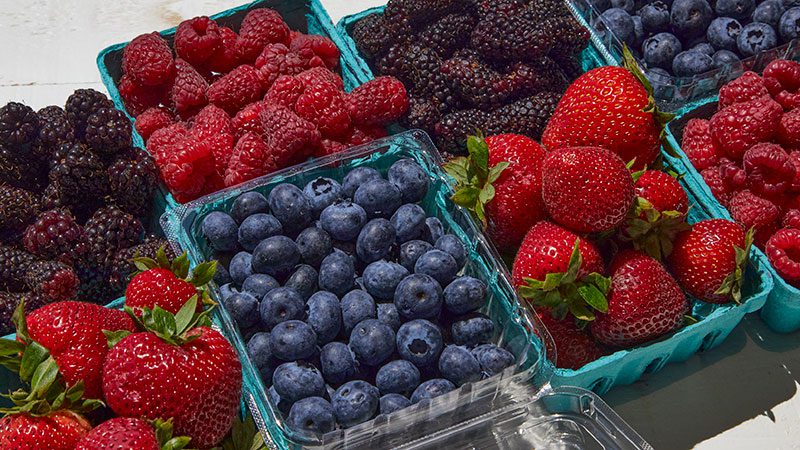How to wash and store berries

Ripe summer berries are so sweet, so craveable, so beautiful, so juicy — and so delicate. Here are our tips for cleaning berries and keeping summer berries fresh as long as possible.
First, a caveat. As chef and author Greg Atkinson noted, the best methods for storing berries “all depends — on how soft the berries are, on what kind of berries they are, on how long you need to hold them.”
But within those parameters, there are some good general rules.
First, assess your berries. Some types, especially backyard or heirloom berries, may be so ripe and fragile that you’re truly better off eating them immediately instead of trying to lengthen their lifespan.
For instance, while we think of strawberries as generally holding up well in the fridge for a few days, many of the June-bearing strawberry varieties developed for Northwest climates, like Shuksans or Hoods, are soft, intensely flavored, and shorter-lived than their everbearing cousins.
No matter what your timeline is, discard any spoiled or moldy fruit immediately to avoid spreading decay.
Should I wash berries?
Berries should be washed — but there are two schools of thought on when to do so. Many experts say to wait until you’re ready to prepare or eat the berries. Otherwise you’ll add unnecessary additional moisture, making the berries go bad faster. Or you may bruise them in the process, also hastening decay.
Instead, those experts say to store berries unwashed in the refrigerator until ready to use. (PCC’s produce merchandisers say this is especially true for blueberries, which have a protective bloom that’s lost when washed.)
Once you’re ready to wash the berries, be gentle. Spray them gently rather than streaming them with the full force of the kitchen faucet. For maximum protection you can even put the berries in a colander, fill a big bowl with water, and dip the colander into the water while swishing the berries gently with your hands.
Another school of thought, backed by some research but hotly contested, does recommend washing berries sooner rather than waiting.
Kenji Lopez-Alt has written that, so long as the berries are carefully dried, washed berries will stay mold-free for days longer than unwashed berries. Based on research from fellow food science master Harold McGee, he recommends washing berries in hot water rather than cold, to kill mold spores. Lopez-Alt recommends submerging berries in hot tap water for about 30 seconds, drying them in a salad spinner triple-lined with paper towels, then storing them in the refrigerator in a breathable container.
Should I wash berries with vinegar or baking soda?
Some berry lovers swear by adding vinegar to water when washing berries to further inhibit mold, with most suggesting 3 parts water to 1 part vinegar.
Testers at Serious Eats, though, said the vinegar doesn’t harm berries but also doesn’t extend their lifespan. (This assumes you’re already using a hot water rinse and drying them well.) Also, washing with vinegar risks producing berries that taste like vinegar, if you don’t aggressively rinse them.
Using baking soda in water as a berry cleanser is a more recent trend, but Epicurious calls it abrasive and probably unnecessary.
How to store berries
Berries should be stored in the refrigerator. Keep them in the main part of the refrigerator rather than the crisper drawer for improved air circulation.
Ideally, keep the berries in containers that are vented for airflow — specialized reusable containers exist for this, though it’s simpler to just keep them in their original containers. (Bonus for crossword/Scrabble fans: Those classic berry boxes are known as punnets.)
For especially mush-prone berries (cough cough raspberries) you might take more precautions. Gardening expert Willi Galloway, in her book “Grow Cook Eat,” suggests dividing raspberries between containers, in layers no more than two berries high, so the weight of the top berries doesn’t squish those underneath. Tougher berries like blueberries can be piled higher without fear.
How to freeze berries
While not much beats a fresh berry, the ultimate storage solution for berries is to freeze them for later use.
After washing and patting dry, lay berries out in a single layer on a baking sheet lined with parchment paper. Freeze for several hours — this “IQF” method (meaning “individually quick frozen”) means the berries won’t stick together in frozen clumps. Pour the IQF berries into a Ziploc bag or other freezer-safe storage container, squeeze out any extra air, and label with berry type and date.
Frozen berries are great for smoothies, fruit crisps and pie filling, muffins and other treats.
